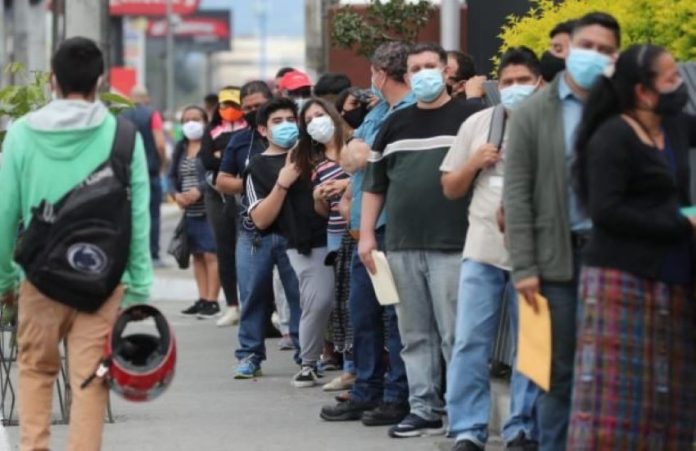Coyotes are intelligent hunters, known for their ability to survive in a wide variety of habitats. Their numbers fluctuate with the ebb and flow of their food source, a built-in population control for both prey and predator. However, the term coyote can also apply to a clever Mexican expediter who can handle complex government transactions for the bureaucratically challenged.
These two-legged coyotes are also in tune with their environment of endless queues, institutional architecture, mind-numbing requirements and vague suppositions. Natural systems are predisposed to balance and prosper when left unmolested, and the two-legged coyotes are thriving in Mexico.
For the average expat or snowbird, life can mostly be a slow-paced and easygoing affair until you have to deal with Mexican bureaucracy. Those of us from the so-called first-world countries have been lulled into complacency after a lifetime of dealing with government services that are run in a perspicuous and somewhat efficient manner.
My first experience with a two-legged coyote was when I needed a Mexican driver’s license, about 10 years ago. I started by talking with a gringo friend who had gone through the process and was willing to help. I was told that I needed to be at the licensing facility by 7 a.m. to get a good place in the line; when the place opened at 8 a.m., only the first 50 people in line would be allowed into the building.
After a bit of thought, my friend suggested that 7 a.m. might be too late to be one of the first 50 people, and that 6:30 a.m. would be a better bet.

I am retired, and anything which requires a predawn wake-up I find to be pestiferously repugnant.
I was told I would also need to provide an original blood test to establish my blood type, along with a residence card, a passport and a recent utility bill.
“A recent utility bill?” I queried.
The utility bill was to establish my place of residence. Since I was renting at the time, I pointed out that my landlord’s name was on the bill, not mine. Augh.
Under those circumstances, the situation would require a signed and notarized statement, with a photocopy of my landlord’s identification. Since my landlord lived in Mexico City, the process of obtaining a driver’s license was becoming significantly more arduous than I had anticipated.
I further learned that there is a 30-minute class, in rapid Spanish, on the rules of the road. Having driven extensively in Mexico, I was quite surprised to learn Mexico actually had rules governing a driver’s behavior, let alone enough rules that would require a 30-minute dissertation.
I also learned that a written quiz — in Spanish, of course — followed the lecture, and then there would be the driving test. If all went well, I would be given a piece of paper with lots of colored stamps to be taken to another complex of government buildings. I would then stand in a line and relinquish this piece of paper to the clerk behind the counter. Once my colorfully stamped document was handed in, I would get into another line for the taking of my picture, and then to the final counter, where I would receive my license.
I was told to expect the testing process to be between four and six hours — that is, if there were no problems along the way. The process of actually having the license issued could take another two to three hours.
At this point, I contemplated the ramifications of being caught driving with an expired license from the United States; this option was looking better all the time.
A week or so later, I was whining to a Mexican friend about the laborious process of obtaining my driver’s license. I asked if he would accompany me to el edificio tránsito. He laughed and told me he’s never gone through the full process, not when a coyote can get it done in less than an hour.
I had only been in the country for a couple of years at that time and immediately thought about that time I paid someone to take my SATs.
After some inquiry, I learned that using a coyote seemed to be a quasi-legal method of obtaining a driver’s license, one of those unwritten workarounds common in this culture. It seems that the process is so complicated that the motor vehicle authorities realized some percentage of the population would never be able to navigate the bureaucratic obstacle course without help; voilà, coyotes!
Doing some quick math with my aged and addled mind, I counted five different queues in three different buildings that could easily squander a full day of my dwindling life. It was time to meet the man who would surmount the labyrinthine colossus that stood between me and the peace of mind of being a legal driver in the state of Sinaloa.
I met Jesús at the entry of el edificio tránsito at 10 a.m. I gave him my resident card, passport and the utility bill without my name on it. He asked my blood type and told me to wait a few minutes. Since we met at the main processing facility, I assumed Jesús was forging the required document with all the colored stamps.
I was stunned at the throngs of people both milling about and standing in a line. The service counter was similar to that of a bank with four windows at which clerks were processing paperwork. The line of people who were waiting their turn numbered 62. It stretched out the door and down a long hall. Behind the four clerks, in an out-of-the-way corner, there were hundreds of old file folders that were bundled and wrapped with string and stacked about a meter high.
As I was contemplating this haphazard archive of official documents, Jesús found me. He led me to a building across the street. We entered a waiting area that was standing room only, and he ushered me through a door marked fotografía.
After my photo was taken, it was hand-delivered to one of three clerks who were affixing photos and laminating finished licenses. About four minutes later, I was walking out with Jesús and my new driver’s license.
The total process, from my handshake with Jesús to admiring my new license, took about 20 minutes and cost 1,000 pesos total.
I will always remember the day I was saved by Jesús.
The writer describes himself as a very middle-aged man who lives full-time in Mazatlán with a captured tourist woman and the ghost of a half-wild dog. He can be reached at buscardero@yahoo.com.
